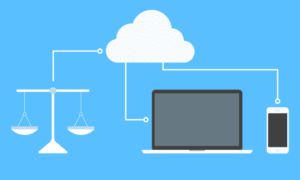Companies striving to increase productivity and efficiency can utilize tools to help them manage their employees effectively. Workforce management software is a valuable solution that can help companies streamline their workforce-related processes and boost performance. It offers various features to assist with employee scheduling, time and attendance tracking, performance management, and other aspects. Here are eight benefits of using software to manage your workforce:
1. Automated Employee Scheduling
Traditional methods of scheduling employees, like spreadsheets or manual calculations, may result in errors or inefficiencies. Workforce management software automates this process, making it quicker and more reliable. It considers factors such as employee availability, skills, and preferences to create the most efficient schedule for your business. By managing your staff better, you may reduce the risk of costly overtime during busy periods.
2. Streamlined Time and Attendance Tracking
Tracking employee hours manually can be time-consuming and prone to errors. You may also struggle to keep track of employee absences and scheduled time off. Workforce management software simplifies this process by allowing employees to clock in and out electronically, eliminating the need for paper timesheets. It can automatically track sick leave, vacation time, and other types of leave, making it easier for managers to monitor and approve requests. This streamlines the time and attendance process, reducing administrative burden and improving accuracy, especially for companies with a large workforce.
3. Improved Employee Performance Management
Workforce management systems give managers the tools to track and improve employee performance. These tools involve goal setting, trend monitoring, performance evaluations, and feedback mechanisms. With this software, employees can see their goals and check their progress toward meeting them. It also allows for regular check-ins between managers and employees, promoting communication and collaboration.
4. Enhanced Compliance Tracking
Compliance with labor laws and regulations assists businesses in avoiding hefty fines or lawsuits. Software solutions help companies comply with these regulations by tracking employee hours, breaks, and overtime. The software is valuable for organizations with shift workers who may work varying schedules or in industries where strict work limit safety standards apply. Workforce management systems may also come equipped with compliance reporting features, allowing you to generate reports for audits or legal purposes.
5. Increased Employee Engagement
Workforce management software aims to improve employee engagement and motivation by giving employees greater visibility into their schedules, goals, and performance metrics. They can also use the system to request time off, swap shifts, or communicate with their coworkers. These features give employees more control over their work schedules and may help them feel valued as part of the team. This can potentially lead to increased job satisfaction, higher retention rates, and better overall performance.
6. Real-time Data Analysis and Reporting
Efficient workforce management systems collect and store data on employee schedules, time and attendance, performance metrics, and more. This data is readily available for managers to analyze and make informed decisions. With real-time insights into workforce trends, managers can identify potential issues or areas for improvement, allowing them to take corrective measures quickly. This can help companies adapt to changing market conditions and make strategic business decisions.
7. Enhanced Demand Forecasting
Workforce management software utilizes historical data and real-time information to forecast future workforce needs. This may help companies minimize labor costs by providing recommendations for employee numbers. By accurately predicting demand, businesses may avoid lost revenue and customer dissatisfaction caused by overstaffing during slow periods or understaffing during busy times. The forecasting capabilities also enable companies to plan appropriate resources for project-based work or seasonal spikes in demand.
8. Simplified Payroll Processing
Manual payroll processing can be tedious and result in paycheck delays. Some workforce management systems integrate with payroll systems to streamline the process, reducing the risk of mistakes and getting employees paid accurately and on time. The system automatically calculates hours worked, overtime pay, and other factors like taxes and benefits. This simplifies payroll processing for HR departments, freeing time to focus on other tasks. It also gives employees a transparent view of their wages and helps maintain accurate records for compliance purposes.
Quality Workforce Management Software for Your Business
Effective workforce management can promote a positive work culture and impact employee productivity and engagement. With a comprehensive software solution, you can streamline scheduling, time and attendance tracking, performance management, compliance monitoring, and payroll processing. Look for a reputable vendor offering quality software solutions to meet your business needs today.



































